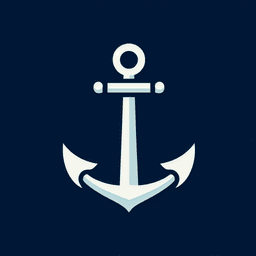
Kedge Anchor: Definition, Uses, and Examples
January 16, 2025
Kedge Anchor
A kedge anchor is a type of anchor used primarily in maritime contexts for maneuvering and securing vessels. It is smaller and lighter than the main anchor, making it easier to handle and deploy. The kedge anchor is typically used in situations where a ship needs to be moved or repositioned without the use of engines, such as in tight harbors or when navigating through narrow channels.
Uses: The kedge anchor is often employed in kedging operations, where the anchor is carried out in a small boat and dropped at a distance from the ship. The vessel is then winched towards the anchor, allowing for precise positioning. This technique is particularly useful for avoiding obstacles or when a ship is grounded and needs to be pulled free.
Design: Kedge anchors are designed to be easily portable and are often equipped with a stock, which helps the anchor to dig into the seabed effectively. They are usually made of durable materials to withstand the harsh marine environment.
Historical Context: Historically, kedge anchors have been used since the age of sail, where they played a crucial role in navigation and ship handling. They were essential tools for sailors, allowing them to maneuver large sailing ships in confined spaces.
Modern Applications: Today, kedge anchors are still used in various maritime operations, including recreational boating and by professional mariners who require precise control over their vessel's position. They are also used in salvage operations and by marine archaeologists.
Kedge Anchor: A Maritime Essential
The kedge anchor is a vital tool in maritime operations, known for its lightweight and portable design, making it ideal for small boats and temporary anchoring. It is particularly useful in situations where a vessel needs to be moved or repositioned without the use of engines, such as in tight harbors or during repairs.
What is a Kedge Anchor Used For?
Kedge anchors are primarily used for kedging, a process where the anchor is carried out in a small boat and dropped at a distance from the main vessel. The ship is then hauled towards the anchor by winding in the anchor cable. This technique is useful for maneuvering in confined spaces or when a ship is grounded.
How Does a Kedge Anchor Work?
The kedge anchor works by embedding itself into the seabed, providing a fixed point that the vessel can pull against. Its design allows it to dig into various types of seabeds, offering reliable holding power despite its smaller size compared to traditional anchors.
Benefits of Using a Kedge Anchor
- Lightweight and easy to handle
- Effective in shallow waters
- Ideal for emergency situations
- Useful for repositioning vessels without engine power
Choosing the Right Kedge Anchor
When selecting a kedge anchor, consider the size and type of your vessel, as well as the typical seabed conditions you encounter. It's important to choose an anchor that offers sufficient holding power for your specific needs.
Conclusion
In summary, the kedge anchor is an indispensable tool for maritime users, offering flexibility and reliability in various situations. Whether for emergency use or routine maneuvering, understanding how to effectively use a kedge anchor can greatly enhance maritime operations.




